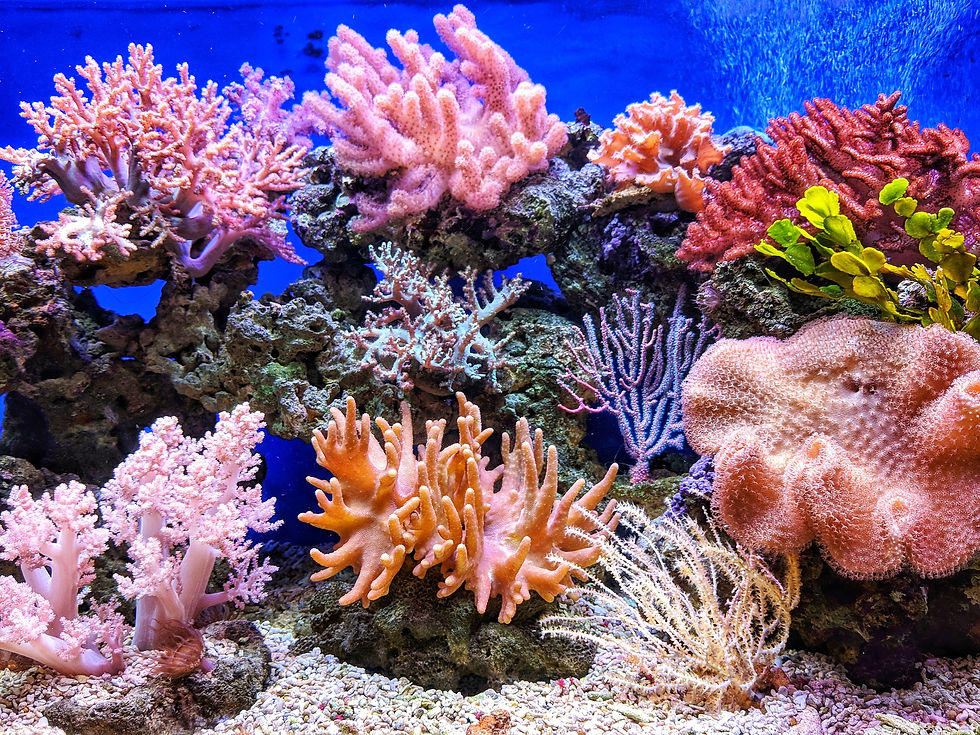Are your clothes feeding the fish?
- Hannah Oates
- Jun 29, 2021
- 3 min read
Updated: Aug 16, 2021
Plastic is everywhere. It’s durability and versatility, alongside side being cheap, makes it a world leader in synthetic materials. However, lasting forever has its disadvantages. As even our clothes are made from plastic microfibres, plastic is entering our oceans in ways far more complicated than just plastic bottles.
The fast fashion industry in particular, is massively to blame for microplastic in the ocean, as 64% of new clothes are made of plastics such as polyester. As people become increasingly anti-plastic, we look at how what we wear impacts our seas. A major concern from both environmentalists and nutritionists, it that microplastics are entering our food chain, as we eat the fish ingesting our plastic waste.
Environmentally-friendly clothing, does it exist?
Some brands, including Stay Wild, are using unwanted ocean waste to create new products. As brilliant this sounds, these clothes can still shed larger amounts of plastic debris which end up back in our ocean. So, what can we do?
In short, the most sustainable clothes to buy are made from organic materials, for example swap next winters polyester fleece for wool instead. Although even brands using recycled plastics can still shed microplastic, they are undoubtedly a better option than buying clothes made from new plastic.
Microfibres, the sea’s worst enemy
To understand the impact fashion has on the ocean, first we must be familiar with microfibres. They are a form of microplastic that are thinner than a human hair and one of the most common ways they enter our oceans in simply via the washing machine! Although tiny in size, microfibres can absorb high amounts of toxic substances that entered the seas years ago and can not only be toxic to marine life, but also damaging to us.
Ocean organisms commonly mistake microfibres for food, meaning as you go up the food chain, anything that eats organisms such as plankton will essential be ingesting plastic. Washing our clothes is just part of the problem; washing machines and water treatment centres cannot trap such minuscule pieces of plastics but there are ways we can help minimise this.
What can we do?
Shop less, wash less
The first few times we wash our clothes is when they shed the most microfibres, meaning the fewer new clothes we buy and the less pointless washes we do, the less microplastics entering the oceans. Washing clothes on a slower spin speed also minimises the amount of plastic shed, as does washing at a lower temperature.
Ditch the tumble dyer
When you can, air dry your clothes! An easy way to lessen the amount your clothes are shaken around, causing them to shed even more plastic. Furthermore, you’ll be saving electricity! A win – win for the ocean and resources.
Shop sustainably
Arguably easier said than done as sustainable clothes are often more expensive, but buying clothes made from sustainable materials will largely lessen the plastic your wardrobe sheds. Especially in the case of winter fleeces, which are believed to shed the most microplastics. More sustainable clothes are likely to be better quality as well, meaning they’ll need replacing much less often!
Looking for inspiration?
TALA is an upcoming, predominantly sportswear brand that prioritises sustainability. As well as all the packaging being recyclable, the tags attached can be planted! Reasonably priced, TALA is a great website for sustainable alternatives.
Co-founded by Made in Chelsea star Lucy Watson, RENUE combines sexy underwear with sustainability to create essentials made from natural resources. Even better, the materials are biodegradable under marine conditions.
Think before you shop
With a truckload of plastic dumped being dumped in the ocean every minute, the fight against plastic is by no means easy, but small lifestyle changes will make all the difference.
We should try and reduce plastic waste wherever we can, including our wardrobe, even more so when there’s a risk of it being in our food chain. There are most definitely gaps in the market in terms of sustainable fashion however the price and accessibility of plastic means it dominates the industry.
As consumers we all have a role in creating a movement, where sustainability is prioritised in order to protect our oceans.



Comments